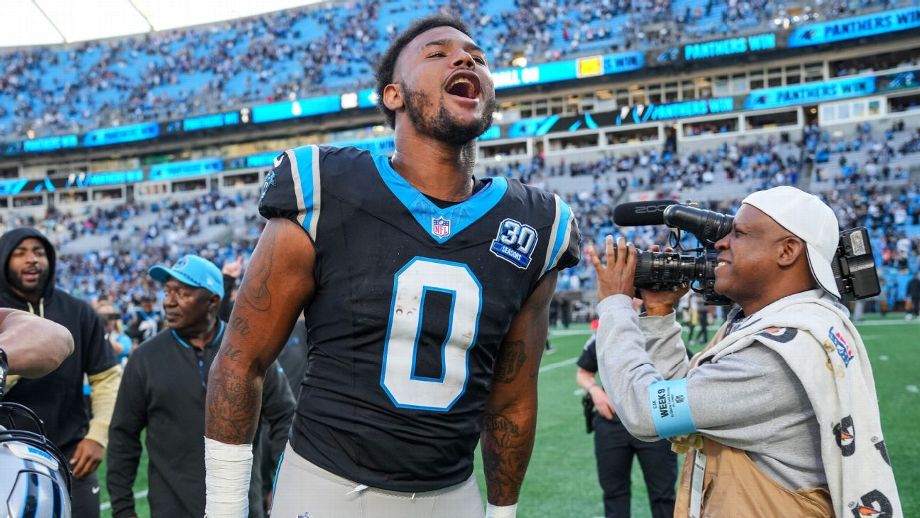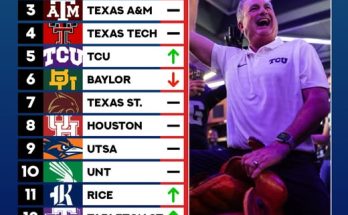The Carolina Panthers have embarked on a bold new chapter heading into the 2025 NFL season, one rooted in rebuilding, recalibrating, and trusting a new generation of players to carry the franchise forward. Among the key components of this forward-looking approach is the tight end position, where the Panthers are counting heavily on Ja’Tavion Sanders and a young corps of tight ends to emerge as versatile weapons in a retooled offense. With the team investing in a fresh quarterback and making philosophical changes on offense, the tight end unit is poised to be a vital cog—not just as blockers or red-zone options, but as primary contributors to an evolving scheme. And at the center of this evolution is Sanders, a second-year pro whose ceiling might just match the Panthers’ aspirations.
Sanders arrived in the NFL with considerable hype out of Texas, where he showcased his rare combination of size, speed, and catch radius. A former five-star recruit, Sanders was the quintessential modern tight end in college—capable of lining up in-line, splitting wide, and running routes like a wide receiver. His production with the Longhorns, particularly in his final collegiate season, revealed a player who was not only comfortable in the spotlight but also one who thrived in it. Now, as he transitions into his second year with the Panthers, the expectations have grown considerably. In many ways, Sanders represents not just the future of the tight end position in Carolina, but a barometer for the offense’s overall growth and capability.
During his rookie season, Sanders flashed potential, even if the statistics didn’t jump off the page. The Panthers, plagued by offensive inconsistency and a carousel of shifting game plans, failed to maximize their weapons, and Sanders was often underutilized or used more as a decoy than a focal point. But even then, moments of brilliance stood out—high-point catches over linebackers, crisp routes across the middle, and an innate sense of spatial awareness in zone coverage. Coaches and analysts took notice. Heading into the 2025 offseason, there was growing internal buzz in Carolina that Sanders could make the fabled “second-year leap” that often defines careers. The team’s offseason program reflected that optimism.
New Panthers offensive coordinator Jason Garrett, brought in to instill structure and rhythm into an offense that lacked both, has been particularly enthusiastic about Sanders’ potential. Garrett, a former NFL quarterback and longtime tight end aficionado, understands the value of a reliable tight end as both a safety valve and a mismatched nightmare. Under his guidance, the Panthers are expected to shift toward a more balanced, timing-based offense—one that utilizes two-tight end sets, play-action boots, and intermediate crossing routes. All of these elements are tailored for someone with Sanders’ skill set. At 6-foot-4 and nearly 250 pounds, Sanders possesses the frame to shield defenders while catching passes in traffic, and his athleticism allows him to run away from slower linebackers or drag safeties into uncomfortable matchups.
But Sanders won’t be alone in his endeavor. The Panthers’ tight end room also includes a mix of young talent and veteran mentorship. While Sanders is expected to be the featured option, players like Ian Thomas and Tommy Tremble remain in the fold and will play crucial supporting roles. Thomas, now entering his seventh season, brings a level of experience and blocking consistency that will be vital for the run game and pass protection packages. Tremble, still only 25, has shown flashes of being a gadget-type player—strong in motion, effective in H-back alignments, and surprisingly productive in red zone situations. The trio gives Carolina flexibility: Sanders as the hybrid receiving threat, Tremble as the movable chess piece, and Thomas as the glue guy who does the dirty work without fanfare.
Yet the pressure is undeniably on Sanders to emerge as the top dog, especially given the way the Panthers’ offense is being reshaped. With rookie quarterback Drake Maye taking over the reins under center, there is a strong belief that tight ends will be leaned on heavily as security blankets and chain-movers. Rookie quarterbacks often look for the middle of the field early and often, and Sanders fits that sweet spot with precision. His ability to sit down in soft zones, improvise on broken plays, and adjust to off-target throws could become the defining feature of Carolina’s passing offense in 2025.
What also makes Sanders’ role so intriguing is how much the NFL has shifted in recent years when it comes to tight end usage. Gone are the days when tight ends were glorified blockers or short-yardage bruisers. The modern NFL tight end is a dynamic athlete expected to operate like a wide receiver with the physicality of a lineman. Sanders fits that mold perfectly. His college tape showed him running slants, outs, seams, posts—virtually every route in the tree—with fluidity and control. More importantly, he has strong hands and a willingness to take hits, two traits that bode well for sustained success in the pro game.
Carolina’s front office is aware of what it has in Sanders, and it has acted accordingly. The team passed on drafting another tight end in the 2025 NFL Draft, instead using resources to fortify the offensive line and add depth at receiver and running back. That move speaks volumes—it’s not just a vote of confidence in Sanders, but also a signal that the team intends to feature him heavily. Internally, he’s viewed as someone who could become a top-five tight end in the league within the next two seasons if his development stays on track.
That said, the growth curve won’t be without challenges. Sanders will need to improve as a blocker if he wants to stay on the field for every down. He has the frame to be a dominant in-line blocker, but technique, leverage, and hand placement remain areas for refinement. Fortunately, Thomas is a willing mentor and has already taken Sanders under his wing. Additionally, staying healthy is paramount—tight end is one of the most physically demanding positions in football, and Sanders must bulk up his durability without sacrificing mobility.
Off the field, Sanders has quickly become a favorite among teammates and coaches. He’s known for his quiet confidence, strong work ethic, and attention to detail. During training camp, he was often the last to leave the field, working on footwork drills or staying behind to catch extra passes from the JUGS machine. In a locker room that’s undergone significant turnover, his approach is helping set the tone for a young Panthers core that is learning how to win—and learning how to lead.
If everything clicks, 2025 could be a breakout year for both Sanders and the Panthers’ tight end unit. With a new quarterback, a coordinator who believes in them, and an offensive scheme that plays to their strengths, the opportunity is as wide open as the middle of the field on a blown coverage. The Panthers don’t just want Sanders to be good—they need him to be great. They need him to be the consistent presence that young quarterbacks crave, the matchup problem that forces defenses to rethink coverage, and the leader that a young, rebuilding team can rally around.
The Panthers may not be playoff contenders yet, but the building blocks are being laid, and few are more critical than Ja’Tavion Sanders. If he blossoms into the weapon Carolina envisions, the tight end room could go from an afterthought to a cornerstone. And in doing so, Sanders might just become the next great name in a league that’s starting to understand the value of tight ends not as role players, but as stars in their own right.



